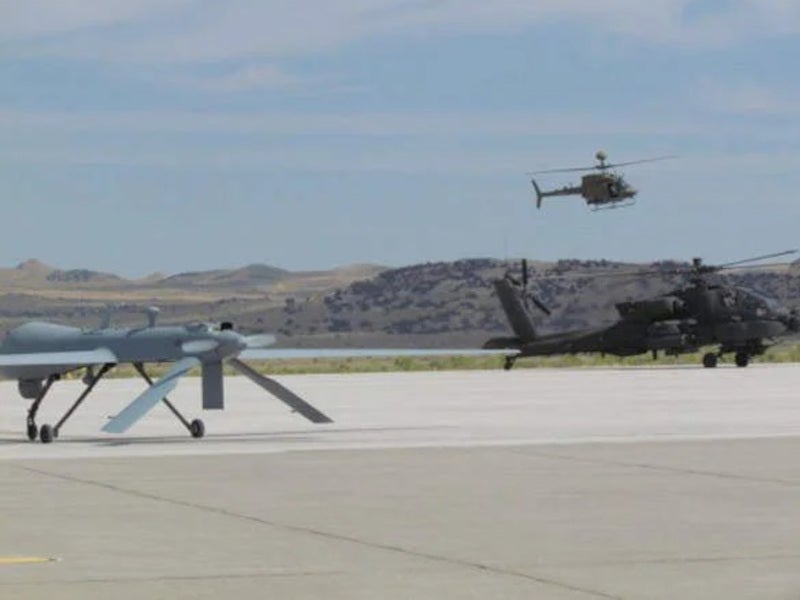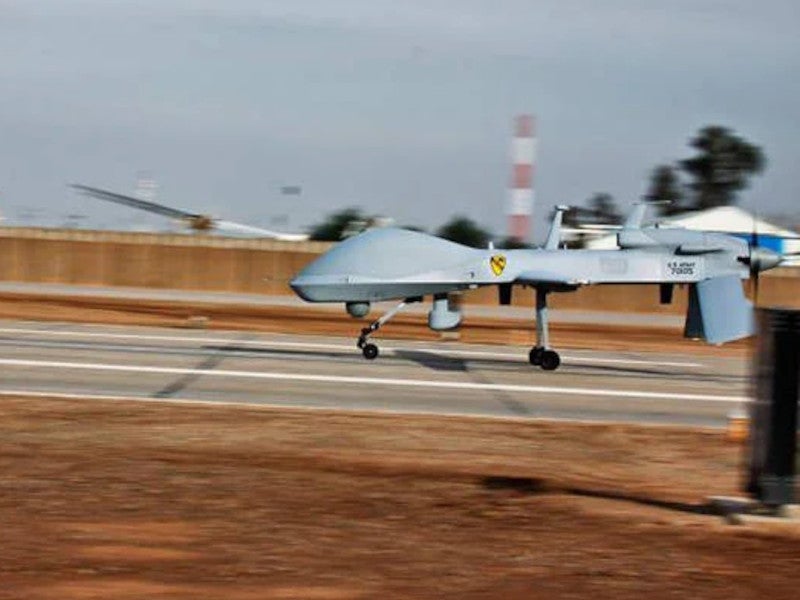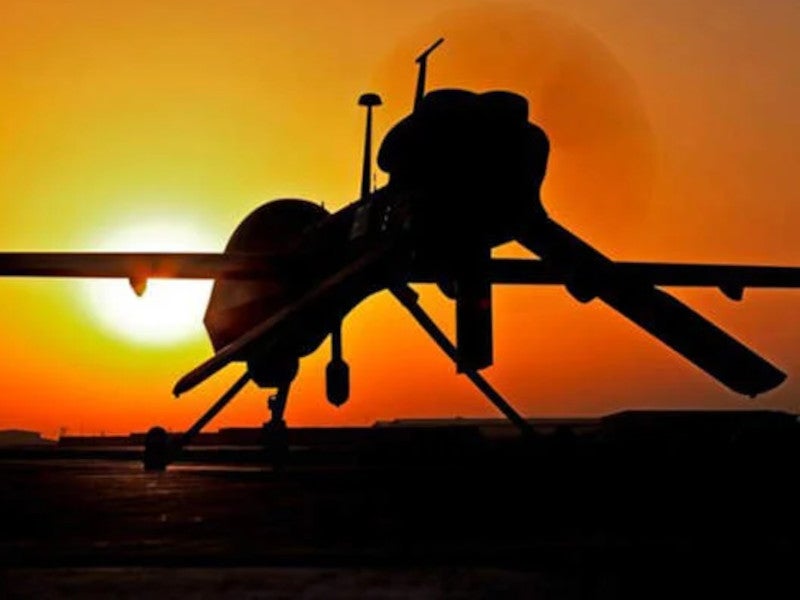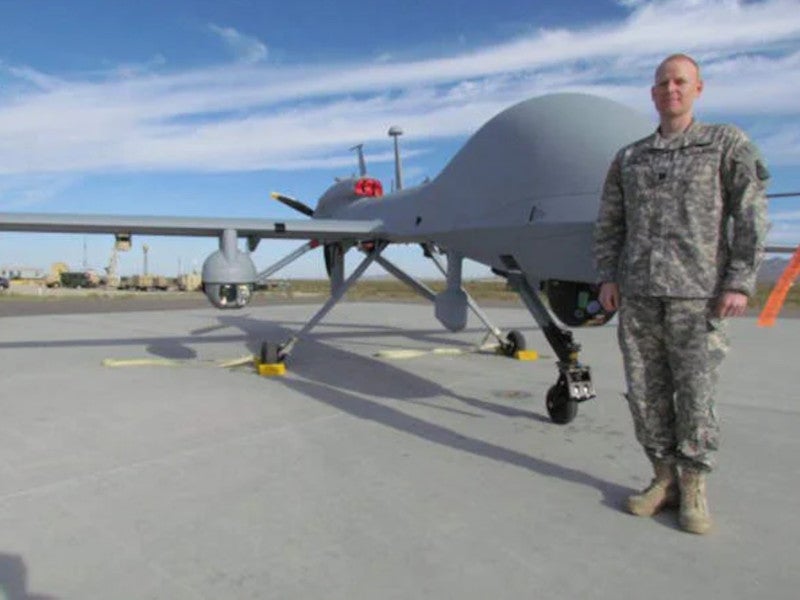MQ-1C Gray Eagle is an extended range/multipurpose (ER/MP) unmanned aircraft system (UAS) developed by General Atomics Aeronautical Systems (GA-ASI) for the US Army. It is an improved variant of the combat-proven Predator unmanned aerial vehicle.
Gray Eagle performs reconnaissance, surveillance, target acquisition, command and control, communications relay, signals intelligence (SIGINT), electronic warfare (EW), attack, improvised explosive device (IED) and battle damage assessment missions.
The UAS accomplished more than 1,700 flight hours during a total of 238 flights during the initial seven-month training and evaluation period.
The first full company of Gray Eagle UAS, F/227 was deployed in June 2012. The army plans to acquire 11 Warrior units, each unit with 12 UAVs and five ground control stations.
To date, 61 Gray Eagle aircraft have been handed over to the US Army, with an additional 44 aircraft currently on order.
In October 2022, GA-ASI introduced the Gray Eagle 25M (GE-25M), the latest variant in their line of UAS. The modernised version includes updated aircraft and ground systems, advanced datalinks and an improved propulsion system.
The first flight of the GE-25M UAS was successfully carried out in December 2023. The flight comes after receiving an undefinitised contract, with a maximum value of $389m, for the supply of GE-25M production representative test aircraft.
The GE-25M UAS is expected to enter service in the 2050s.
MQ-1C Gray Eagle development
The competition for the extended-range multipurpose UAV to replace the RQ-5 Hunter was initiated by the US Army in 2002. An upgraded version of the RQ-5 Hunter and the General Atomics Warrior were also contenders for the competition.
The Warrior was designated MQ-1C by the US Department of Defence (DoD). The MQ-1C was officially assigned the name Gray Eagle in August 2010. The Gray Eagle quick reaction capability (QRC) units were deployed to Iraq and Afghanistan, for introducing the aircraft to combat.
The Gray Eagle was successfully integrated with the AGM-114 Hellfire missile in December 2009. The testing of the Hellfire missile aboard the Gray Eagle was concluded by August 2010. The armed systems are primarily intended for deployment in Afghanistan.
The Defence Acquisition Board (DAB) review in June 2012 authorised the third LRIP purchase of 29 aircraft and associated equipment.
Design and payload of the unmanned aircraft system
Based on the Predator airframe design, the Gray Eagle features a fault-tolerant control system. The aircraft incorporates a triple-redundant avionics system architecture.
The UAS has an increased wingspan compared to that of the Predator. The modular architecture of Gray Eagle allows the integration and operation of multiple payloads. Gray Eagle has a length of 9m (56ft), a wingspan of 17m and a height of 2.1m.
Gray Eagle can carry an internal payload of 261kg and an external payload of 227kg. It can carry multiple payloads, including electro-optical/infrared (EO/IR) with laser designation, a STARLite Synthetic Aperture Radar (SAR) / ground moving target indicator (GMTI) sensor, communications relay and four Hellfire missiles.
The wing hardpoints can be fitted with external payloads such as expendable sensors and weapons. The AGM-114 Hellfire air-to-ground missiles fitted to the aircraft can engage ground-based moving and stationary targets within a range of 500m to 8km.
Engine of the US Army’s ER/MP UAS
The Gray Eagle is powered by a Thielert heavy-fuel engine. The engine develops a power output of 165hp. It supports the ‘single fuel in the battlefield’ concept of the US Army. The engine delivers improved fuel efficiency while burning either jet or diesel fuel.
In May 2023, GA-ASI successfully tested its new 200hp Heavy Fuel Engine (HFE) 2.0 for the first time on a Gray Eagle aircraft.
The US Army is exploring the possibility of upgrading the Gray Eagle UAS with the HFE 2.0 as a replacement for the current engine.
MQ-1C Gray Eagle ground control station
Gray Eagle is operated from the one-system ground control stations (OSGCS). The OSGCS includes flight-critical hardware and software in a modular configuration, mounted on the standard five-tonne medium tactical vehicle.
The operator consoles are used to perform command and control, payload control and weapon launch operations.
The Gray Eagle can fly at a maximum altitude of 29,000ft. It has an endurance of up to 25 hours. The maximum gross take-off weight of the UAS is 1,633kg. The aircraft has a maximum speed of 167 knots.
Gray Eagle 25M (GE-25M) UAS details
The GE-25M UAS offers vital reconnaissance, surveillance, and target acquisition (RSTA) capabilities for division commanders. It also serves as a central communication node in the aerial tier network.
The latest UAS is equipped with multi-intelligence sensors, supplying commanders with useful information for enhanced reach, superiority, and combat choices.
It fosters advanced collaboration with future vertical lift (FVL), air-launched effects (ALE), and joint assets to ensure stand-off survivability and stand-in capability, promoting coordination across different domains of firepower.
The GE-25M incorporates a modular open systems approach (MOSA) into its multi-domain operations (MDO) system, allowing for incremental improvements to be implemented quickly in response to emerging threats.
The aircraft and ground systems of the UAS feature open architecture, advanced datalinks, and an upgraded propulsion system. GA-ASI partnered with the US Army’s Project Manager Endurance Uncrewed Aircraft Systems (PM EUAS) to develop the open architecture.
The onboard edge processing feature of the aircraft will greatly enhance its usefulness to the US Army and joint forces by enabling near real-time threat detection, identification, location, and reporting capabilities.
In addition, the software components are designed to be easily transferable to other manned and unmanned aircraft systems being developed by the US Army.









